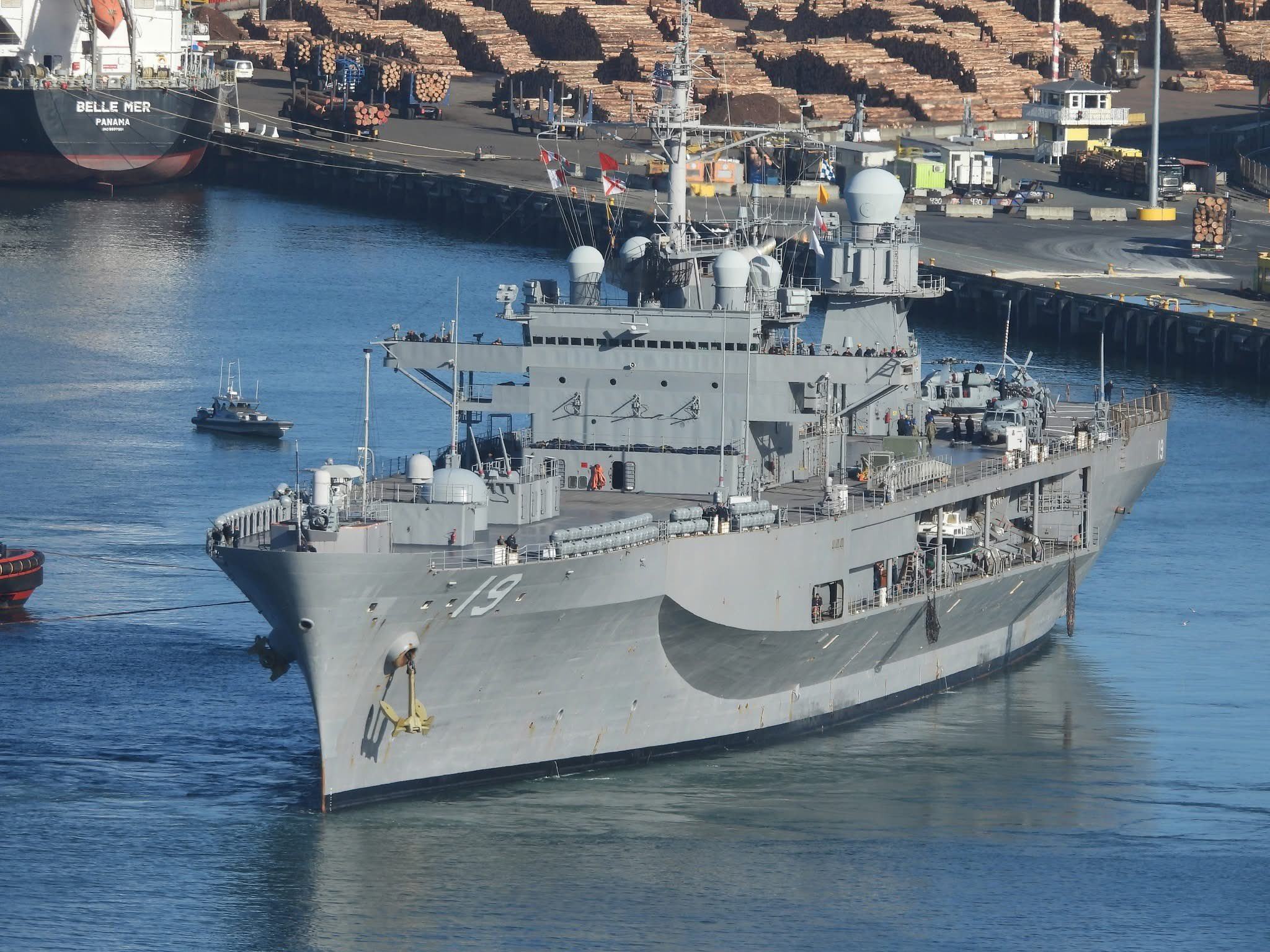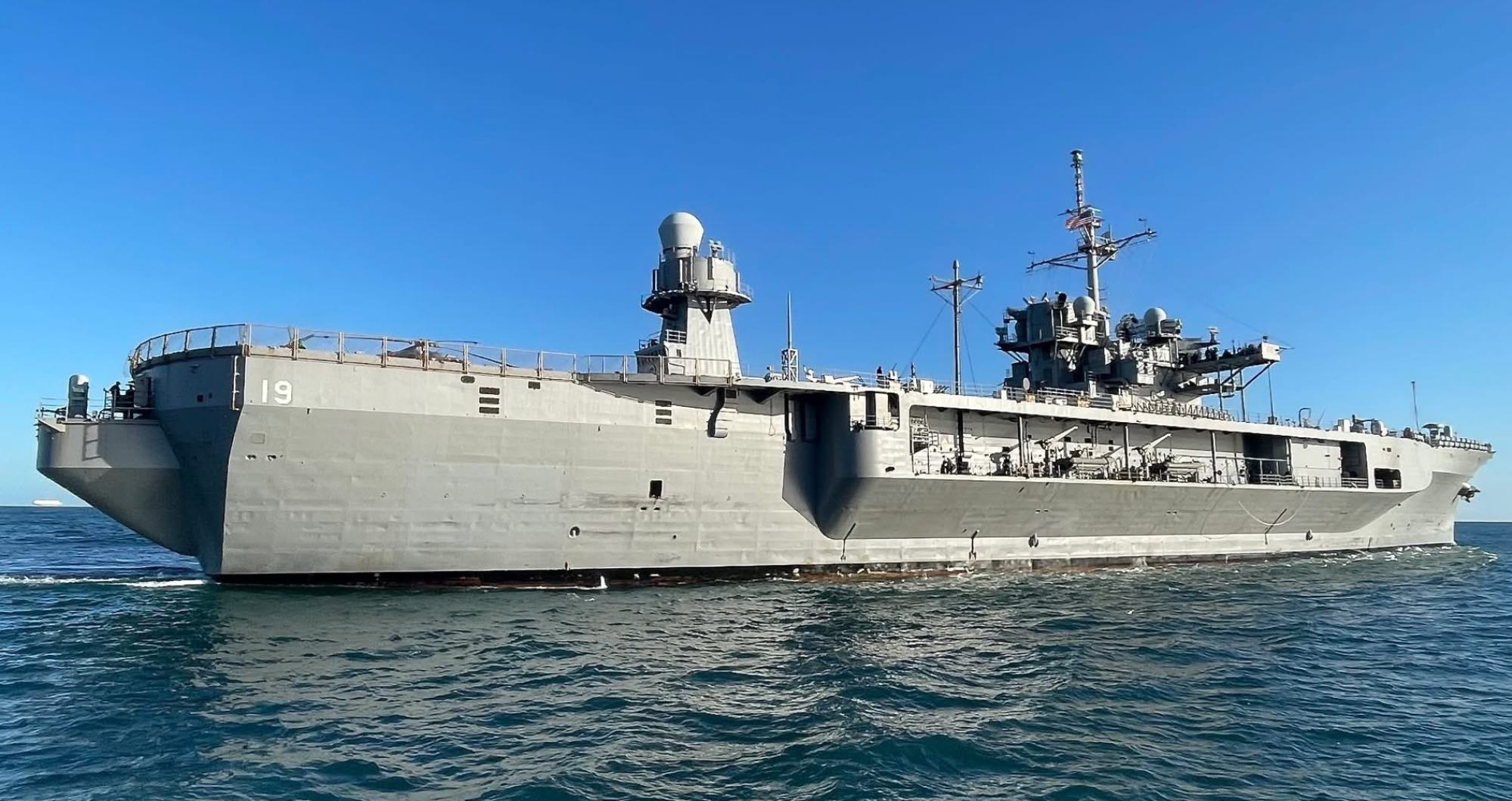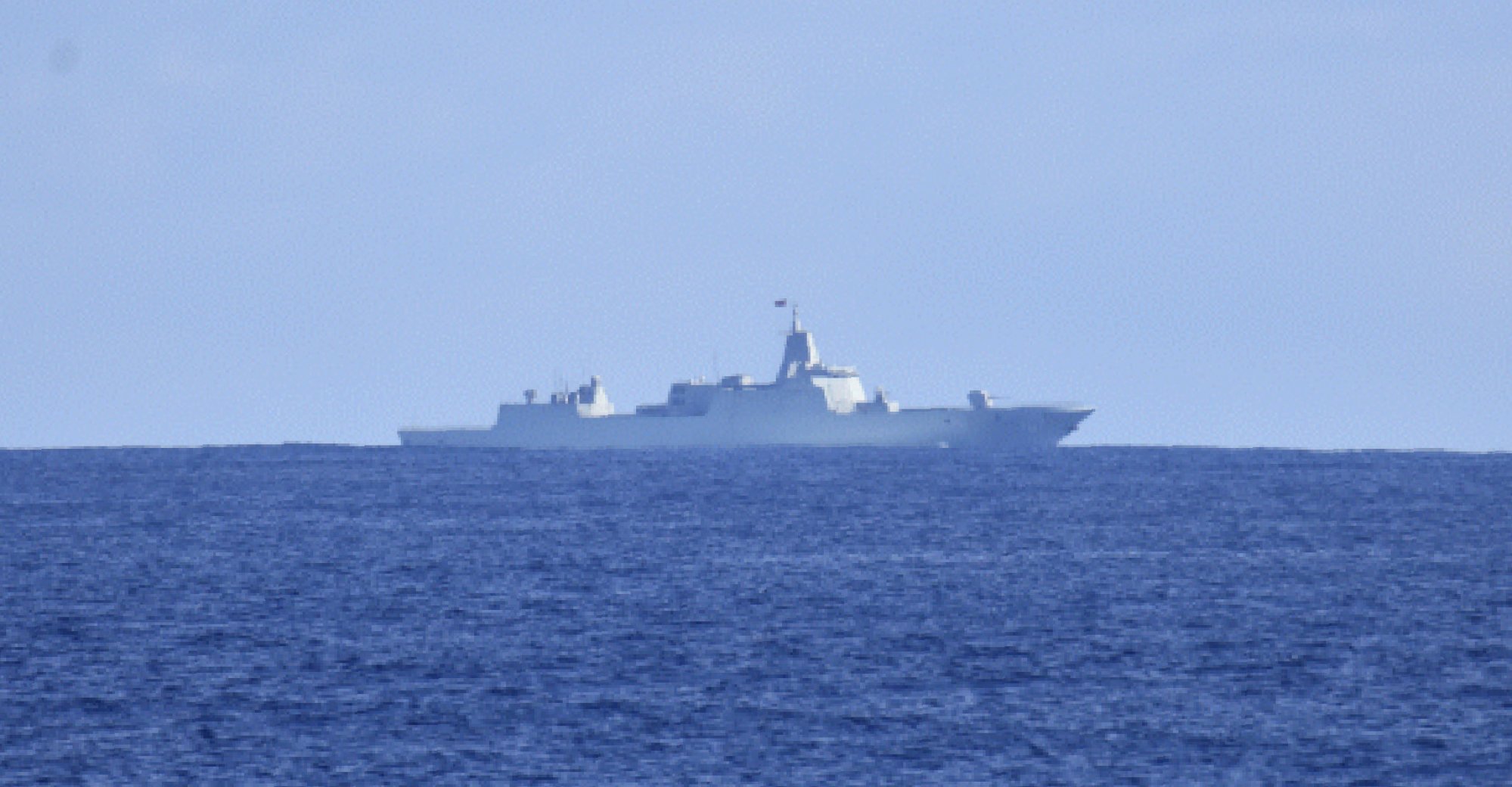US warship’s New Zealand visit a sign of ‘deep ties’ amid Trump-era uncertainty
New Zealand has committed to US$7.1 billion in defence spending over the next four years in response to rising global tensions

The recent arrival of a US warship in New Zealand is likely a result of improved security relations under past administrations that could be jeopardised by Donald Trump’s return to the White House, according to observers.
The USS Blue Ridge arrived in Wellington Harbour last Friday on a goodwill visit, marking the first visit by an American naval vessel to the city since 2021.
During the visit, which ended on Thursday, US Navy officials are said to have met their local counterparts to discuss ways of improving operational readiness and advancing future military capabilities, according to New Zealand media.
The last US Navy vessels to visit were the guided-missile destroyers USS Howard in 2021 and USS Sampson in 2016.
The 200-metre (660-foot) Blue Ridge – flagship of the Japan-based Seventh Fleet – departed Yokosuka Naval Base on April 3 and has visited Australia, Fiji and New Caledonia, American military newspaper Stars and Stripes reported.

Vice-admiral Fred Kacher, commander of the fleet, said the visit spoke to the “deep ties” between Washington and Wellington. “Our partnership is rooted in our common values and respect, and our visit here represents an important opportunity for us to further strengthen the bond between our nations and our navies.”
The visit comes after Chinese warships engaged in live-firing drills in the Tasman Sea in late February and early March.
Robert Patman, an international-relations professor at the University of Otago, said the visit marked the improved security relationship between New Zealand and the US that began during Barack Obama’s administration from 2009 to 2017.
Few shared values
Like many other liberal democracies, the National-led coalition government in New Zealand was trying to come to terms with the fact that it did not share common values and probably few interests with a second Trump administration, Patman said.
The new administration had “enthusiastically undermined an international rules-based order on which New Zealand and many other countries depend”, he said.
Since taking office, Trump has sided with Russia, an aggressor that launched a war of conquest against Ukraine, withdrawn from the Paris climate agreement and the World Health Organization, and threatened tariffs worldwide, raising questions about the future of the global trading system.

Xiaoming Huang, an international-relations professor at the Victoria University of Wellington, said the arrival of the USS Blue Ridge was part of the two countries’ initiatives for defence cooperation that “have been developing for some time”.
Both countries have a strong and long-standing maritime cooperation, characterised by shared interests in regional security, stability and prosperity in the region. They regularly cooperate in joint training exercises, strategic dialogues and bilateral agreements aimed at strengthening maritime security and promoting a rules-based maritime order.
However, Huang pointed to the uncertainty of further defence and security alignments between the United States and New Zealand “given the change of administration in Washington”.
Last month, New Zealand signed a Status of Visiting Forces Agreement with the Philippines – a US ally – regulating the deployment of troops for joint military exercises.
The agreement marked a milestone in relations between Wellington and Manila after New Zealand join the Philippines and other countries last year for multilateral maritime drills in the South China Sea.
Under the Defence Capability Plan released last month, New Zealand committed NZ$12 billion (US$7.1 billion) of funding over the next four years, including NZ$9 billion of new spending.
The plan will raise the country’s defence spending from just over 1 per cent of its gross domestic product to over 2 per cent in the next eight years.
“Global tensions are increasing rapidly, and New Zealand has stepped up on the world stage, but our current defence spending is simply too low,” Prime Minister Christopher Luxon said in early April.
Global tensions are increasing rapidly, and New Zealand has stepped up on the world stage, but our current defence spending is simply too lowPrime Minister Christopher Luxon
On whether Wellington’s defence policy had turned muscular, Alexander Tan, principal research fellow and founder of the Institute for Indo-Pacific Affairs in Christchurch, said that defence had “atrophied” since 2001 when then-prime minister Helen Clark’s government abolished the fighter wing of New Zealand’s air force.
Clark’s government estimated that disbanding the combat force would free up NZ$870 million over 10 years, to be reallocated to other areas of the country’s military.
“Subsequent governments have not kept up defence spending to the basic maintenance level,” Tan said. “If muscular means to grow some muscle after years of malnutrition and being ‘bedridden’ then I guess it is becoming more muscular.”
The Defence Capability Plan built upon the previous 2019 version, most notably by increasing the overall investment in defence capabilities and prioritising the development of new and enhanced capabilities.
So while recent events such as China’s live-firing may not have a bearing on Wellington’s defence plans, they have, according to Tan, “certainly helped in pushing some of these plans along”.
“And certainly public opinion, though still divided, has slowly been more in favour of increasing defence spending.”